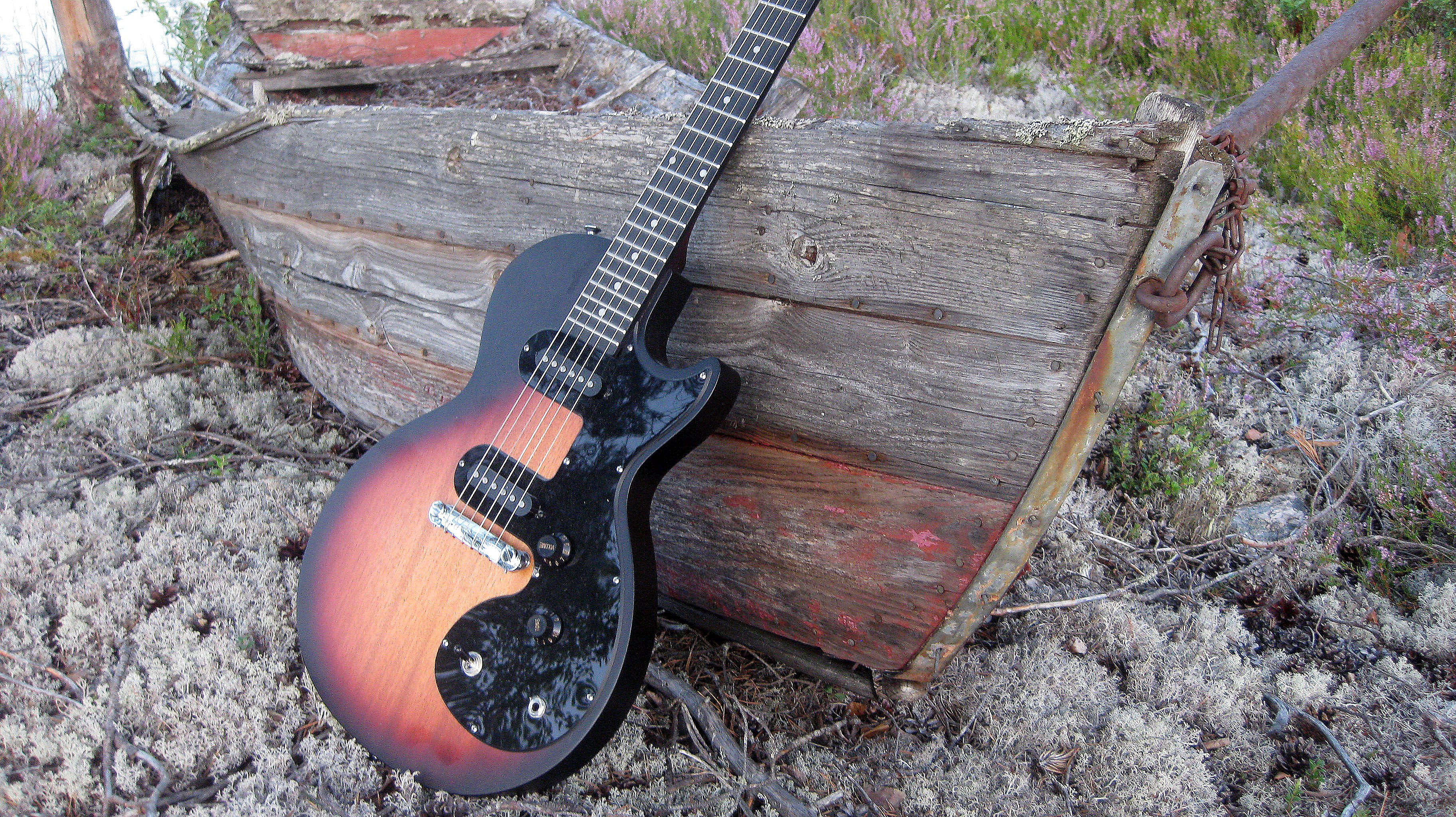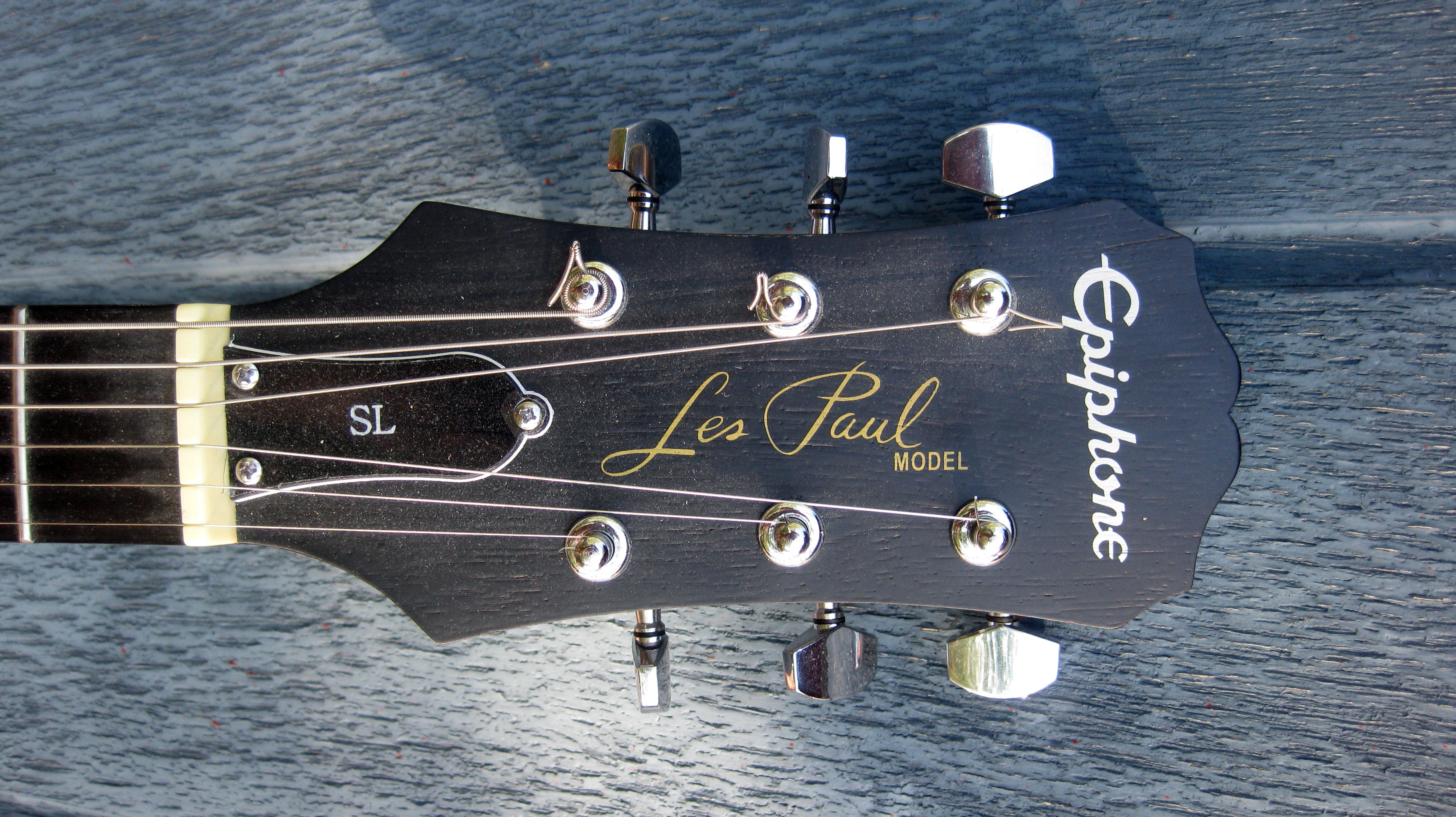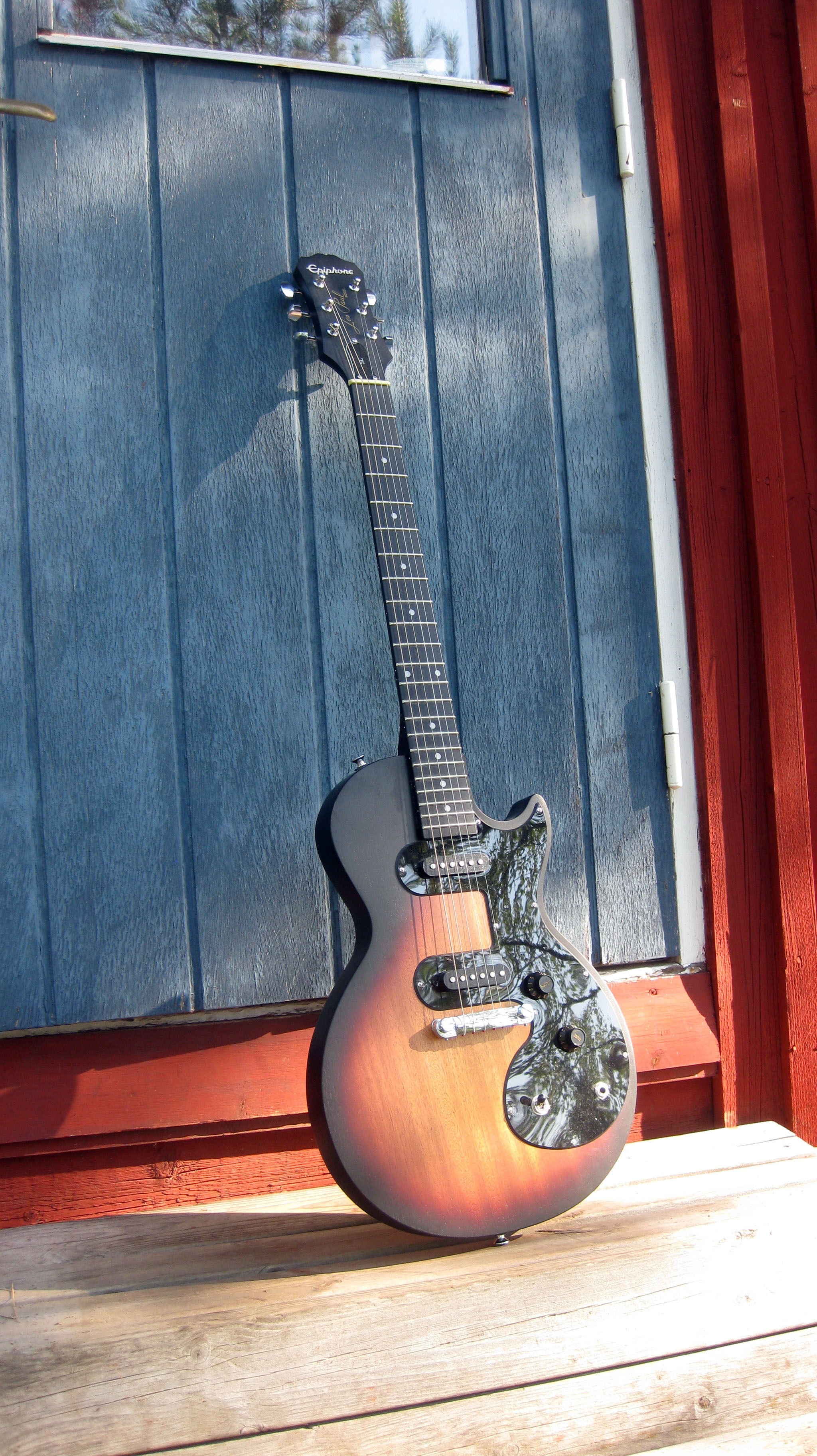1960 Gibson Melody Maker vs. Epiphone Les Paul SL

Making movies
Imagine, if you will, that you’re a young and successful screenwriter and director. Now you’ve got this bold idea of making a new sequel to a series of blockbuster movies that you really enjoyed as a kid. You’ve already found a great up-and-coming actor, your own age, to play the main character. The only remaining challenge is to make the movie a credible sequel to its famous predecessors…
Ryan Coogler and Aaron Covington must have faced that same challenge when they started thinking about making ‘Creed’, a 2015 sequel to the highly successful ‘Rocky’ film series. Chances are, they didn’t spend a long time thinking. They needed Sylvester Stallone! Stallone was not only the star, but also the writer and director of most Rocky movies. Luckily, he agreed to play an aging, former boxer Rocky Balboa, who would now become a trainer. Although Stallone was ’only’ a supporting actor this time, he totally stole the show and even got nominated for an Oscar!
The Sylvester Stallone of this Blog?

Back to the Epiphone Les Paul SL: just another reasonably priced guitar that entered manufacturing in China in 2017. Or, phrased differently: the latest ‘sequel’ in the famous Les Paul line of guitars, which dates back to 1952, the year that Gibson started producing its first solid-body electric. Puzzled by its extreme affordability and famous predecessors, I couldn’t help but wonder:
-
Is the “SL” a real Les Paul, a credible new addition to the Les Paul series?
-
What is there to say about some latter-day offspring to the famous originals, created by different people, for customers with a different budget, and produced in a different country?
The answers soon presented themselves. The singer/guitar player of my band showed up with a different, lighter guitar because, unfortunately, he suffered from some back pains. “Hey what kind of guitar you got over there?! A Les Paul Special or so?” – I tried to make an educated guess. Close enough, but no: it was a 1960 Melody Maker, D (double pickup) type… The Sylvester Stallone of this blog! Bringing in an old hero and juxtaposing it with the new kid on the block (the ‘SL’) seemed pretty interesting to me. Politely asked, my band mate was friendly enough too to lend me the guitar for a week or so.

Gibson Pedigree
Now, that Melody Maker really puzzled me: it had two single coil pickups and a single cutaway. Based on pictures of Joan Jett’s guitars for instance, I thought they mostly came with one humbucker or P90 pickup, and a double cutaway? Wikipedia quickly provided clarity: “The Gibson Melody Maker was first launched in 1959 and discontinued in 1971. Early on (1959 – 1961), it had a single cutaway slab body style similar to the early Les Paul Junior model, but thinner. In 1961 the body style changed to a double cutaway”. Then, about the 2008 Joan Jett Melody Maker: “it differed from the standard model by having a single humbucker pickup, an ebony fretboard and a double-cutaway body”… plus a kill switch.

Joan Jett with Melody Maker, portrayed on the sleeve of Album (1983), her third studio album and the second to feature her backing band The Blackhearts.
Oddly, Gibson produced several different reincarnations of the Melody Maker over brief periods of time (e.g. 1977 – 1983 and 1987 – 1992), only to take them out of production again. From 2003 to 2006, they produced a “Les Paul Melody Maker”, which had specifications and tone woods that were perhaps closer to a Les Paul than to a Melody maker. In contrast, the subsequent 2007 Melody Maker could “almost be considered a reissue” of its 1959 namesake, according to then CEO Henry Juszkiewicz.
A Brother from Another Mother
That 2007 Gibson takes us back to the Epiphone Les Paul SL: remarkable parallels between the two guitars include their affordability, low output single coils, single volume and tone controls mounted to (identical?) vinyl control plates, thin (35 mm) bodies and, lastly, ‘faded’ finishes. The latter means that no transparent, glossy top coat was applied – SL allegedly stands for ‘Sans Lacquer‘ *. The single coils of the 2007 Melody Maker had DC resistances of 4.6k and 4.8k (neck and bridge, respectively), which is pretty close to our Epi SL (4.5k, both neck and bridge) … might those have pickups of the same design? Still, there are also marked differences between the two guitars. The original 1960s-style headstock and mahogany body of the Gibson for instance – the SL has a poplar body. Also, the Gibson was produced in the USA – not China – mostly in a single (bridge) pickup version. Finally, pretty unique for a Les Paul: the Epiphone has a bolt-on neck!

Sound and Vibe
Nice to know perhaps, but how do they play and sound? Despite its low output, the SL’s neck pickup has a full-bodied sound which sounds a lot like a Les Paul to me. Only the attack betrays its ceramic single coil design. With the toggle switch in center position, neck plus bridge pickup, the SL still reminds me a lot of an LP; the sound gets tighter and slightly metallic, with a bit of added treble – I always hear a bit of BB King’s tone there. The real added value of the SL, however, is in the bridge pickup. Its thin, jangly character lends itself perfectly to playing arpeggiated, distorted chord accompaniments. Combined with some old school overdrive, it directly inspired me to write a new song! Full-blown hard-rocking chords (check the audio further down) also come out very well; I hadn’t cared about playing those for quite a while. That € 100, – Epi was already a success to me, even more so as it was bought in a quest for… thinner tones. I had been chasing fatter tones for quite a while, mainly for jazz. Sometime after starting to play in a loud four-piece pop band with a singer however, I started appreciating single coils and thinner tones again, and the affordable Epi seemed an interesting experiment.
Snappy, Funky and Aggressive
What room leaves all that for the aging star, the 1960 Melody Maker, to earn an Oscar? For starters, it immediately has a classier feel than the SL when you pick it up, probably due to its nicely rounded body edges and glossy sunburst lacquer. The glued-in neck also feels sturdier and more rigid than its bolted-on counterpart. Furthermore, the Melody Maker’s mahogany body resonates more pleasantly when played, emphasizing upper middle frequencies instead of the upper bass/lower middles that dominate the unplugged sound of the SL. That the SL hardly sounds muddy when amplified is probably the merit of its pickups! The Melody Maker, once amplified, really shines; instead of sounding elderly, it sounds snappy, funky and… like Rocky Balboa… aggressive! Those old single coil pickups really make it sound livelier than the brand-new SL and have a pretty high output too. Their DC resistances are 6.7k and 7.0k (neck and bridge, respectively), which is indeed quite high for single coils.

As all this remains somewhat subjective, two brief recordings. The first contains three versions of the ‘Back in Black’ intro, starring, in order of appearance: (1) Les Paul SL; (2) Melody Maker and (3) Epiphone Les Paul standard with stock humbucker. On all three guitars, the bridge pickups were selected and they were played through a Cosmic Ampworks Stellar Deluxe amplifier with 15″ Eminence Legend 1518 loaded speaker cabinet. Overdrive came from a Boss BD2 Blues Driver pedal, reverb from an Electro Harmonix Oceans 11. The track was recorded with a Zoom H1 Handy Recorder – no effects or equalization were applied.
The second track just contains some clean funky ninth chords, played on the same three guitars, but with the neck pickup selected. In order of appearance: (1) the Melody Maker, (2) the Les Paul SL (3) a 2004 Epiphone Les Paul standard with Seymour Duncan SH-55 Seth Lover PAF replica.
And the Oscar goes to…
…. both guitars ?! The Epiphone Les Paul SL clearly offers a lot of value for a modest price. It sounds fine – actually quite similar to a 1960 Melody Maker in some respects – and plays well. It absolutely deserves the name Les Paul based on its sonic character but, given its resemblance to the Melody Maker, it might perhaps more appropriately have been called a ‘Les Paul Melody Maker’, like the one that Gibson produced from 2003-2006. But this is, after all, a brother from another mother… Epiphone!
Compared with the 1960 Melody Maker, the SL lacks character, style and vibe, but should one expect to find those in a € 100,- guitar? To a certain extent, it may be possible to add your own style and character… for instance by changing out the neck pickup for a reissue of the 1959 Melody Maker single coil pickup. Many might prefer a mini humbucker or P90 replacement however. Other ideas are to round the body edges with a router, give it a new paint job, change hardware, electronics etc. One thing that can hardly be replaced, of course, is the SL’s poplar body. Although poplar may be a neutral or slightly dull tone wood, the good thing about using a quick-growing temperate species in mass-produced guitars such as the SL is that it may help preserving the Earth’s tropical rainforests. In conclusion: the SL is a fun little guitar with a lot of potential, and may enthuse new guitar players and modders all over the world!

* There was actually one other Les Paul with the designation “SL”: the Gibson Les Paul Special SL, produced from 1996-1999, according to Wikipedia. It bears little resemblance to the Melody Maker and Epiphone Les Paul SL, however, as it has double humbuckers and no plastic control plate, for instance.
This website uses cookies to improve your experience. We'll assume you're ok with this, but you can opt-out if you wish. Cookie settingsACCEPT Privacy & Cookies Policy






